
Saluda County is a county in the U.S. state of South Carolina. As of the 2010 census, the population was 19,875. Its county seat is Saluda. The county was formed from northern and eastern portions of Edgefield County.
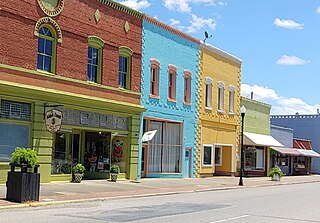
Saluda is a town in Saluda County, South Carolina, United States, along the Little Saluda River. The population was 3,565 at the 2010 census. It is the county seat of Saluda County.

James Bonham was a 19th-century American soldier who died at the Battle of the Alamo during the Texas Revolution. He was a second cousin of Travis and was a messenger of the Battle of the Alamo. His younger brother, Milledge Luke Bonham, was a brigadier general in the Confederate States Army in the American Civil War, and served as Governor of South Carolina from 1862 to 1864.

Hunting Lodge Farm is a historic house located near Oxford in Oxford Township, Butler County, Ohio, United States. Constructed as a hunting lodge, it has been used by multiple prominent local residents, and its distinctive architecture has made it worthy of designation as a historic site.
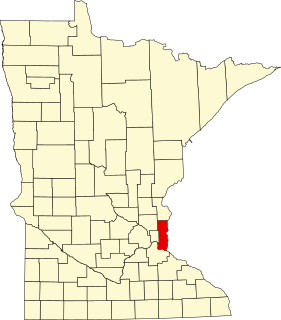
This is a list of the National Register of Historic Places listings in Washington County, Minnesota. It is intended to be a complete list of the properties and districts on the National Register of Historic Places in Washington County, Minnesota, United States. The locations of National Register properties and districts for which the latitude and longitude coordinates are included below, may be seen in an online map.
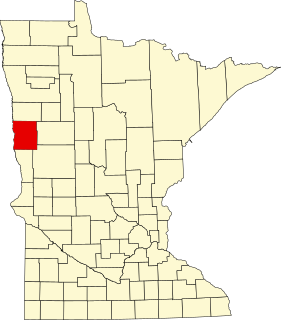
This is a list of the National Register of Historic Places listings in Clay County, Minnesota. It is intended to be a complete list of the properties and districts on the National Register of Historic Places in Clay County, Minnesota, United States. The locations of National Register properties and districts for which the latitude and longitude coordinates are included below, may be seen in an online map.

This is a list of the National Register of Historic Places listings in Saluda County, South Carolina.
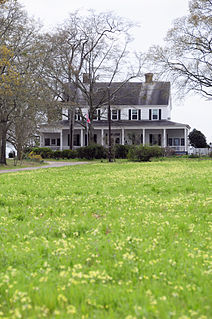
Darby Plantation plantation house was built by Nathaniel Lipscomb Griffith, the father of Anne Patience Griffith, at the time of her marriage to Edgefield lawyer Milledge Luke Bonham. It has a deep wraparound porch supported by twelve columns. The main rooms are twenty feet by twenty feet with twelve foot ceilings, and the house is built of pine. When Bonham returned from the United States' war with Mexico, he was elected to the U.S. House of Representatives. At the outbreak of the Civil War, Bonham was put in charge of South Carolina's volunteer army and served with distinction. In 1862, he resigned his commission and became governor of South Carolina. In 1863, the house was sold to Confederate Secretary of the Treasury George Trenholm. During the Civil War, the house was used as a storage place for some of the items from the Charleston Museum. Since 1878, the plantation has been owned by the Wise family.

Webb-Coleman House, also known as Christian's Post Office, is a historic home located near Chappells, Saluda County, South Carolina. It was built between 1800 and 1825, and is a 2+1⁄2-story, five-bay, Federal style farmhouse. It has a gable roof and is sheathed in weatherboard. A one-story, frame wing was added in the mid-19th century and in 1915, a one-story, gable-roofed, frame ell and shed-roofed porch. Also on the property are the contributing mid-to late-19th century cotton house, an early-20th century garage, an early 1930s dollhouse, and an early-20th century tenant house. The house operated as a post office from 1833 to 1844.

Marsh-Johnson House, also known as Robert Johnson House, is a historic home located near Saluda, Saluda County, South Carolina. It was built about 1817, and is a two-story, log farmhouse sheathed in weatherboard. The house sits on a brick foundation and has a one-story, shed-roofed porch. It is considered one of the earliest and intact log residences in South Carolina. The house rests on massive brick piers, which are laid in Flemish bond. A one-story, shed-roofed porch with wooden foundation piers and four rough hewn tree trunks supporting the roof spans the façade. Many of the windows retain their batten shutters.

Stevens–Dorn Farmstead, also known as the Peter M. Dorn Homeplace, is a historic home and farmstead located near Saluda, Saluda County, South Carolina. The house was built in three phases between 1880 and 1900, and is a one-story, rectangular, frame dwelling. The house consists of 1 1/2 rooms, with three major front doors and one minor front door. Also on the property are a contributing woodshed/buggy house, smokehouse, corn crib, and barn, all built about 1880; and three brooder houses dated to about 1945.
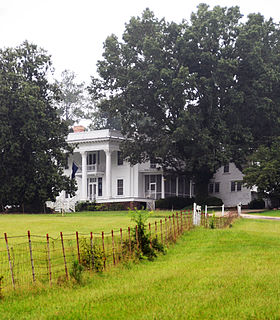
Whitehall is a historic home located at Saluda, Saluda County, South Carolina. It was built in about 1893, and is a Classical Revival style frame dwelling with a two-story, rectangular main block with additions. Two façades feature tetrastyle, two-story porticos with Corinthian order columns. Also on the property are 11 outbuildings. It has two sunken rice patties. It was the home of the locally prominent Etheredge family.

Old Strother Place, also known as Fruit Hill, is a historic plantation home and national historic district located near Saluda, Saluda County, South Carolina. It was built about 1856, and is a two-story, frame vernacular Greek Revival style farmhouse. Also on the property are a contributing barn and kitchen building, garage, and water tower.

Butler Family Cemetery is a historic family cemetery located near Saluda, Saluda County, South Carolina. It is located behind the Butler Methodist Church. It was established about 1802, and includes the graves of members of one of South Carolina's leading families. Notable burials include: William Butler (1759–1821), Pierce Mason Butler (1798–1847) and Andrew Pickens Butler (1796–1857).

Saluda Theatre is a historic movie theater located at Saluda, Saluda County, South Carolina. It was built in 1936, and is a two-story, stuccoed masonry building in the Art Deco style. The theater closed in 1981. It was restored after 1987, and is home to the Saluda Players.
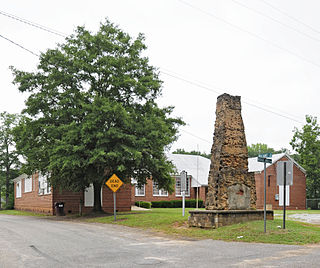
Ridge Hill High School, also known as Ridge Spring Star Community Center, is a historic high-school building for African-American students located at Ridge Spring, Saluda County, South Carolina. It was built in 1934, and is a large, one-story, "H"-shaped building with a central multipurpose room and six classrooms. Ridge Hill was used as a high school until the 1956–1957 school year. It remains in use as a community center.
Saluda Old Town Site is a historic archaeological site located near Saluda, Saluda County, South Carolina. Archaeological remains indicate the site was occupied between 5,000 and 2,000 years ago. It was the site of a town of the Saluda people of the late-17th and early-18th century. On July 2, 1755, it was the site of a treaty signing recognizing the sovereignty of the King of England over all 360,000 square miles of Cherokee lands in South Carolina. In 1769, those lands formed the Ninety-Six District.

Heslep House is a historic home located at Columbia, South Carolina. It built about 1927, and is a two-story Spanish Mission Revival style stuccoed house. It features round-headed windows, arches, balconies, sun decks, a square tower, sculptural portal and barrel tile roof.

Building at 303 Saluda Avenue, also known as John C. Heslep House, is a historic home located at Columbia, South Carolina. It was built about 1917 as a two-story brick residence, then remodeled and rebuilt in the Spanish Colonial Revival style in 1927–1928. It features a low-pitched tile roof, coarse stucco walls, and cast iron balconies. Also on the property is a contributing guest house.

Gov. Thomas B. Jeter House, also known as Sarratt House, is a historic home located at Union, Union County, South Carolina. It was built in 1859, and is a two-story, clapboard dwelling with Victorian detailing. It features a one-story front verandah and scalloped trim. It was the home of Thomas Bothwell Jeter, who served as the 79th Governor of South Carolina from September 1, 1880, to November 30, 1880.






















